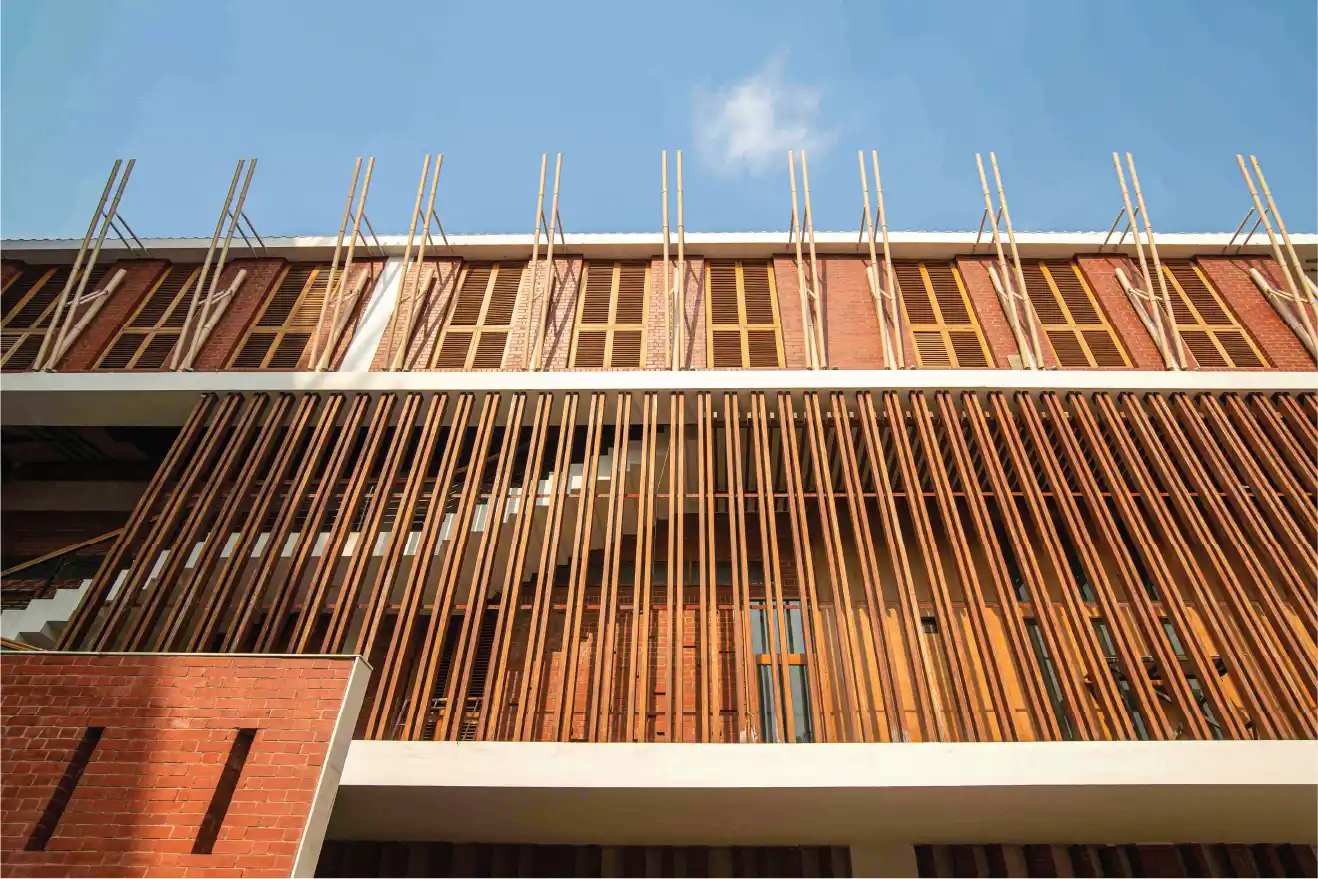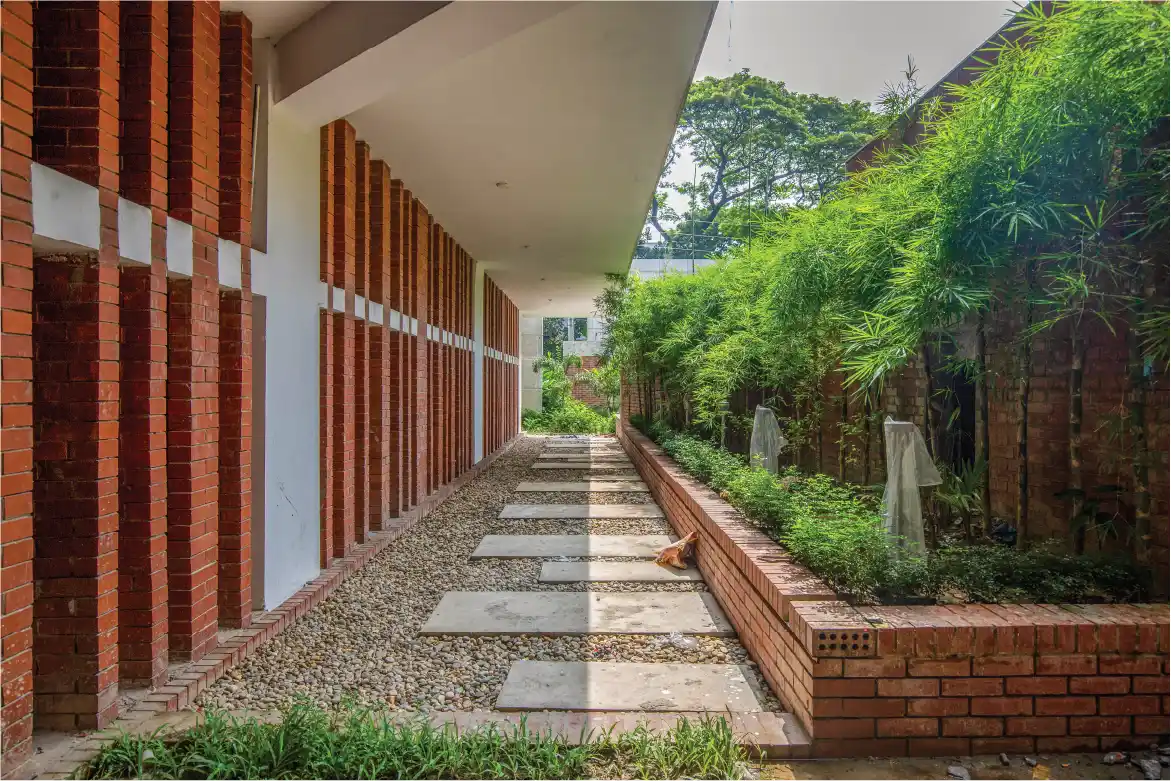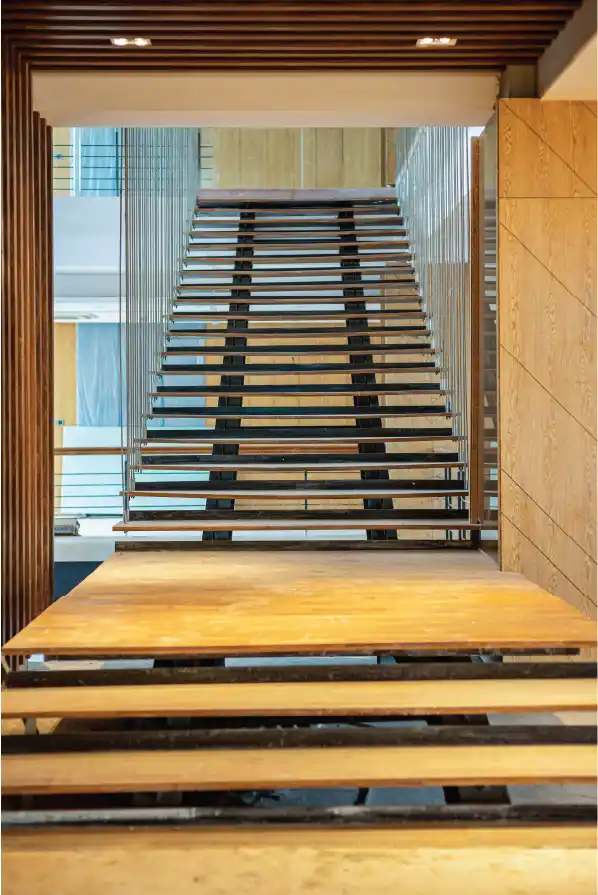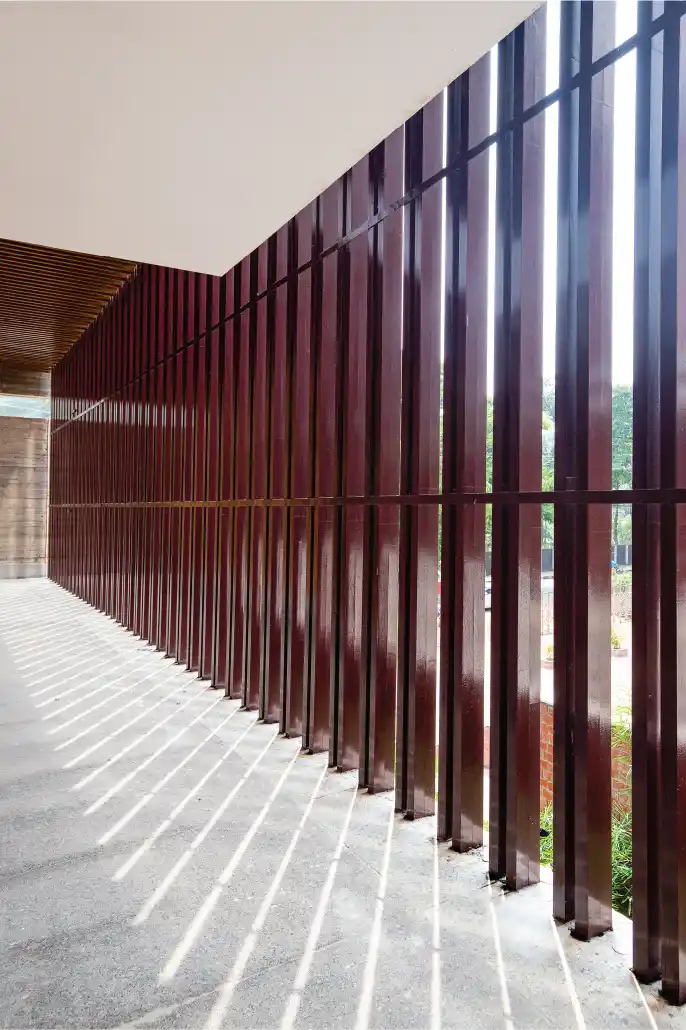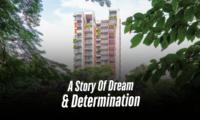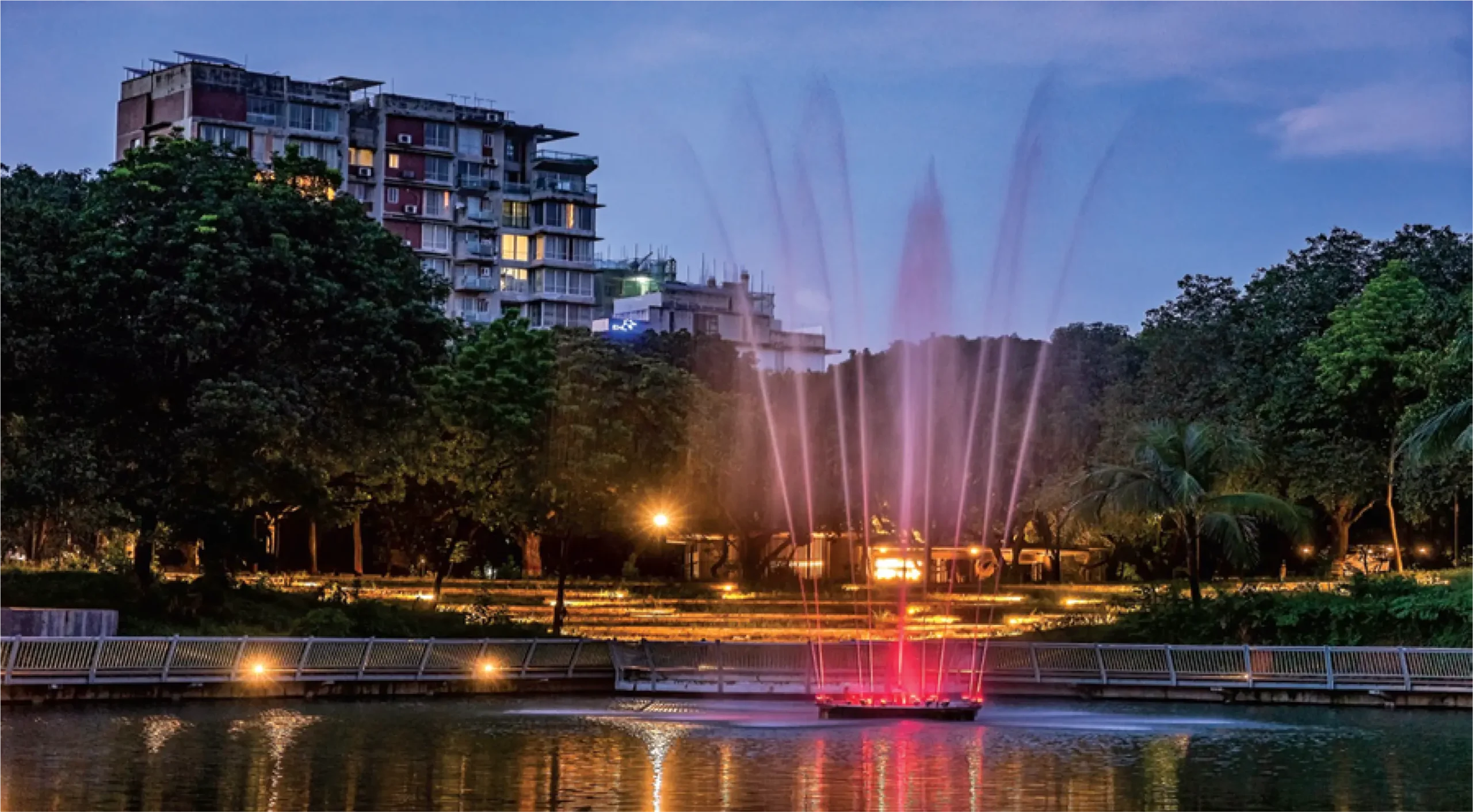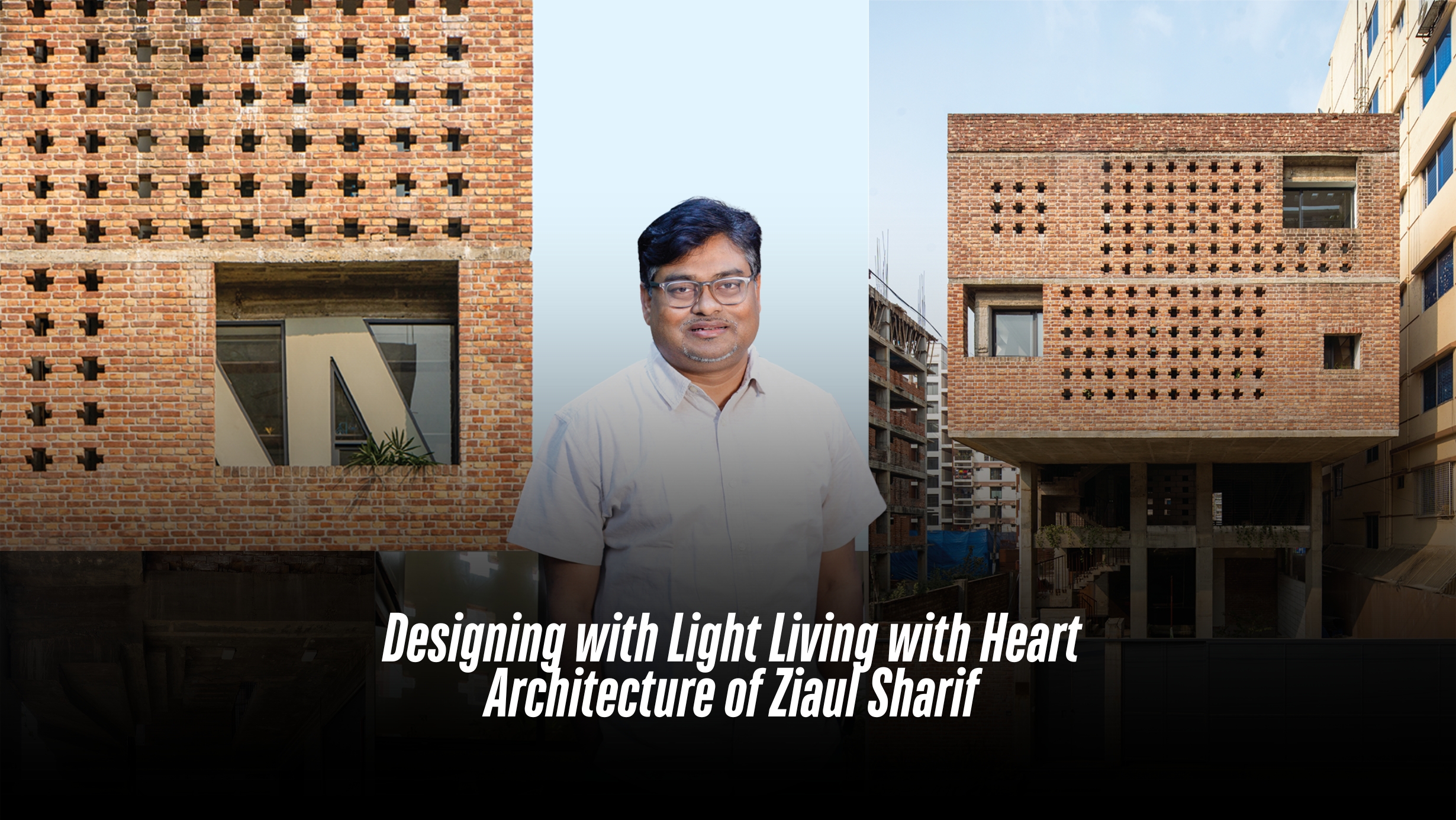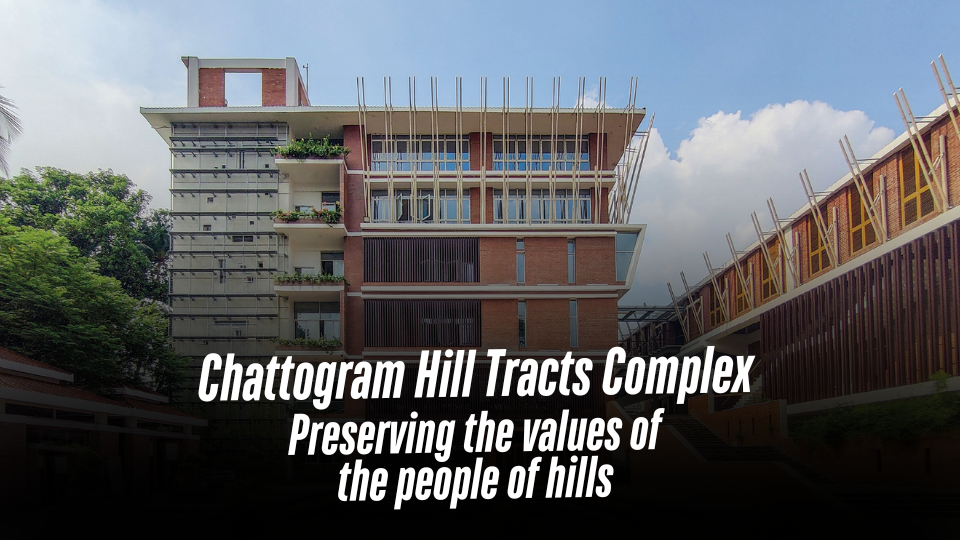
The complex was designed with one mission in mind: to give visitors the impression that they are experiencing a piece of the Chattogram Hill Tracts right in the heart of bustling Dhaka. The complex serves as a pivot between the people, and architecturally, it has achieved in taking us close to experience Chattogram Hill Tracts without having to travel 300 kilometers.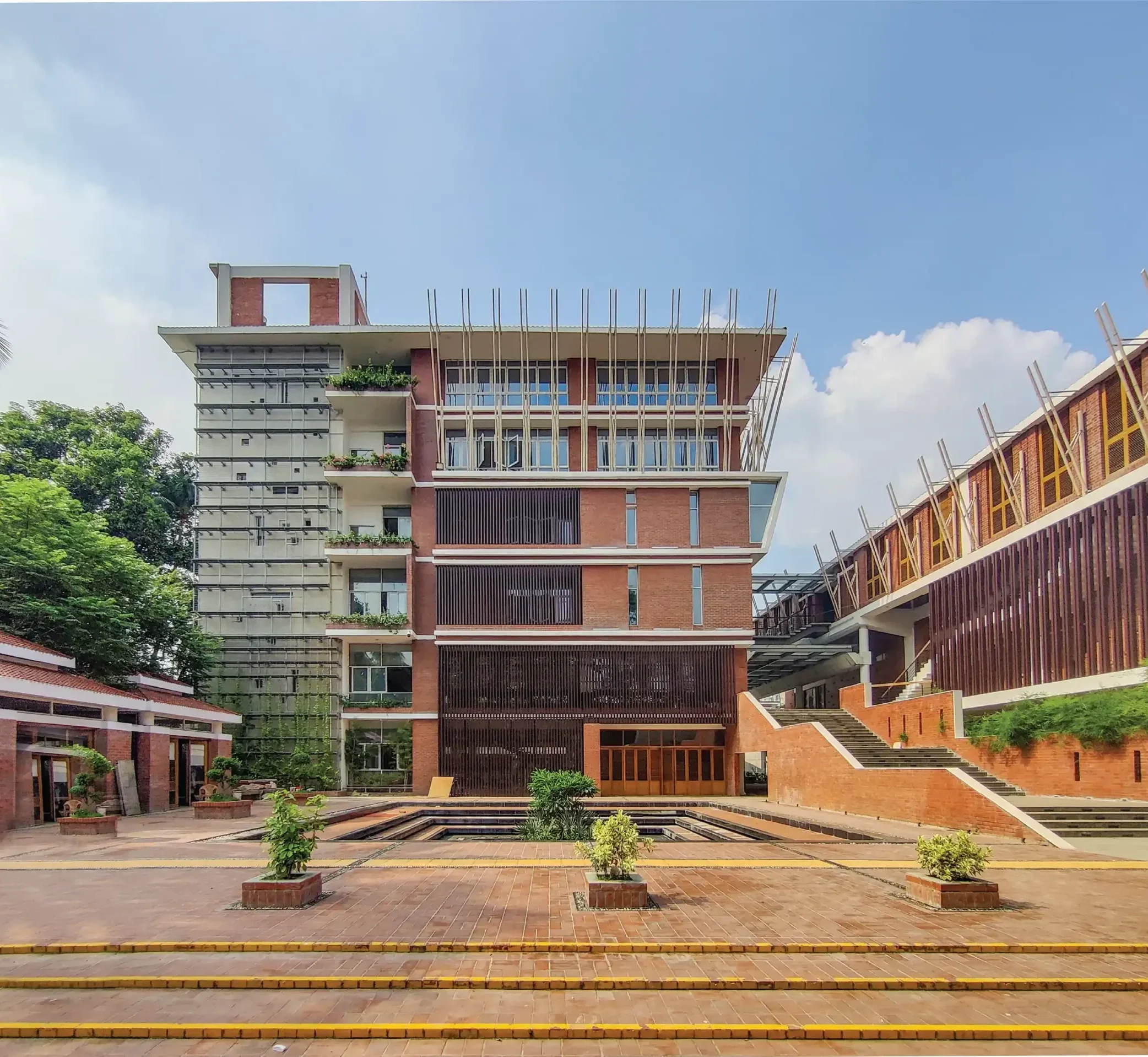
This cultural complex consists of an office building, library, multipurpose hall, amphitheater, restaurant, public plaza, sculptures, and water body in the 2 courtyards, souvenir shops, etc. The public places of this complex are designed in a way to facilitate communal meets, fairs, and cultural events in the public and semi-public zones. Layout, zoning, planning, and construction of the entire complex were modeled after, or at least resembled, structures hailing from the hill tracts, using their common building materials like bamboo, straw, cane, and thatched roofs, which were initially used.
A distance of 300 kilometers keeps Dhaka people from experiencing the rich cultures of the Chattogram Hill Tracts (CHT). To bridge that, the Chattogram Hill Tracts Complex has been constructed on Bailey Road, in the heart of the capital city of Bangladesh. This government project has also brought the deeply cultural people of the CHT closer to the Dhakaites. The primary concept behind this 2-acre complex was to serve as a common gathering space where children of hills and city people can come together, as well as exchange intercultural values.
To strengthen the complex, modern materials like reinforced concrete and rods were used around it but not to take away its vernacular architectural roots from it. For example, thatched roofs of huts are trussed up with external support struts or buttresses made of very basic material but with superior compressive strength—bamboo. However, the aluminum beams propping up the surrounding top floor serve that symbolic role. The complex was designed with one mission in mind: to give visitors the impression that they are experiencing a piece of the Chattogram Hill Tracts right in the heart of bustling Dhaka. A sloped garden and a fountain mimicking the trickling down of water from a hill face welcome visitors.
The sound of water trickling can trick the mind that one is standing next to a natural fountain if they are leaning into the experience. The grand amphitheater is yet another attraction of the Chattogram Hill Tracts Complex. Besides functioning as a venue for plays and shows, this open-air amphitheater can be a wonderful place to sit and enjoy the quiet and spatial experience of this state-of-the-art complex.
North of the amphitheater is a crescent-shaped artificial water body. Many beautiful sculptures are displayed between the water body and the amphitheater. These two attractions are joined by a spiraling staircase. The sloped garden on the side of the elevated amphitheater gives a visitor the impression of standing atop a hill. However, visitors will be greeted by beautiful waterscapes at the entrance, even before they reach the best part. The neat waterbody is depressed into the ground, and its step design can remind one of the Rajsthani Chand Baori, although a lot less elaborately. This should give an idea of the extensive care that was spent constructing this complex, which is meant to bolster relations between two peoples. And whether one would like to collect a souvenir, they can do so at the entrance where the souvenir shops are, next to the water body, or they may get their souvenirs at the end of their stay, since the shop would be in the way either way.
The number of elements in the complex is high. Yes, there are public spaces that hold all the pretty water bodies and sculptures, semi-public spaces comprising administration buildings, and private spaces that form up a minister’s bungalow, chairman’s bungalow, and dormitories and suites for officials. Yet, the entire complex boasts ample open space through which sufficient air and light flow through without much hindrance. Nooks and crannies of this large project are given room to grow green grass and plants wherever possible. Grass aside, walkways are divided up by lines of pebbles between brick and tile floors, occasionally having concrete stepping slabs. To design freely with nothing held back is one way to go. The designer might as well create something completely fresh and be applauded for it. However, fusion, on the one hand, means staying truthful to each element in the blueprint, and, on the other hand, it also means having to come up with something different by mixing two or more elements.
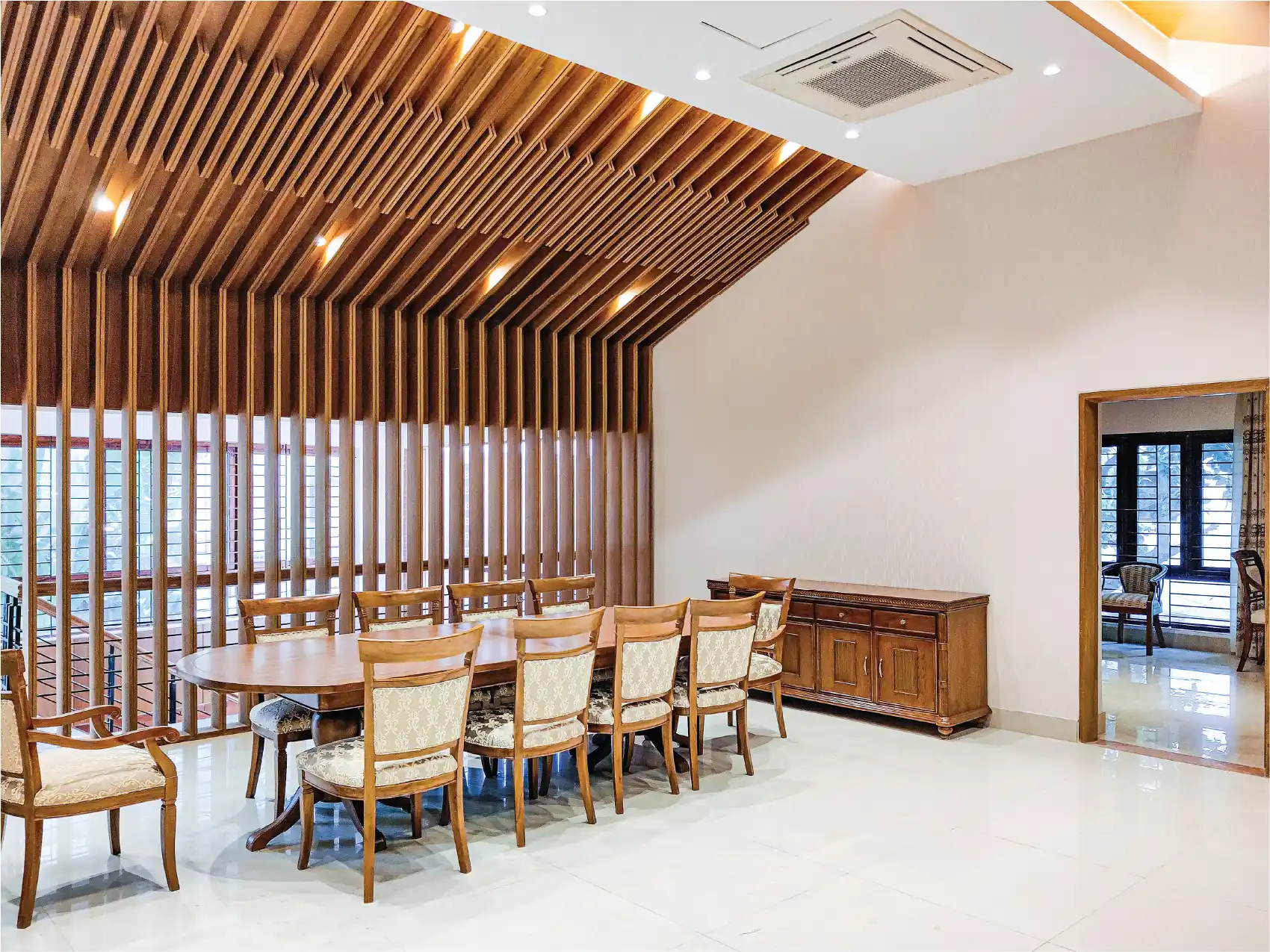
Architects with extensive experience and a clear vision are then responsible for achieving this. Restrictions of conforming to design elements from the hill tracts while embracing modernity were there, but the finished outcome, it seems, has achieved the desired fusion. A fine balance between modern versus nature is evident in this complex. And yet, the interior design of the Chattogram Hill Tracts Complex is a very different picture. Every inch of its interior oozes modernity in every way possible. Hanging staircases supported by high-tensile steel cables, lofty ceilings with wooden panels for ultra-modern design, soft, warm ceiling lights, squeaky clean floor tiles throughout the interior, etc., all add up to the modern style of interior decoration. Since its inception in 2022, the Chattogram Hill Tracts Complex has already hosted two full-fledged Mela (fairs). Culturally, the complex serves as a pivot between the two peoples, and architecturally, it has achieved in taking us close to a CHT experience without having to travel 300 kilometers.



